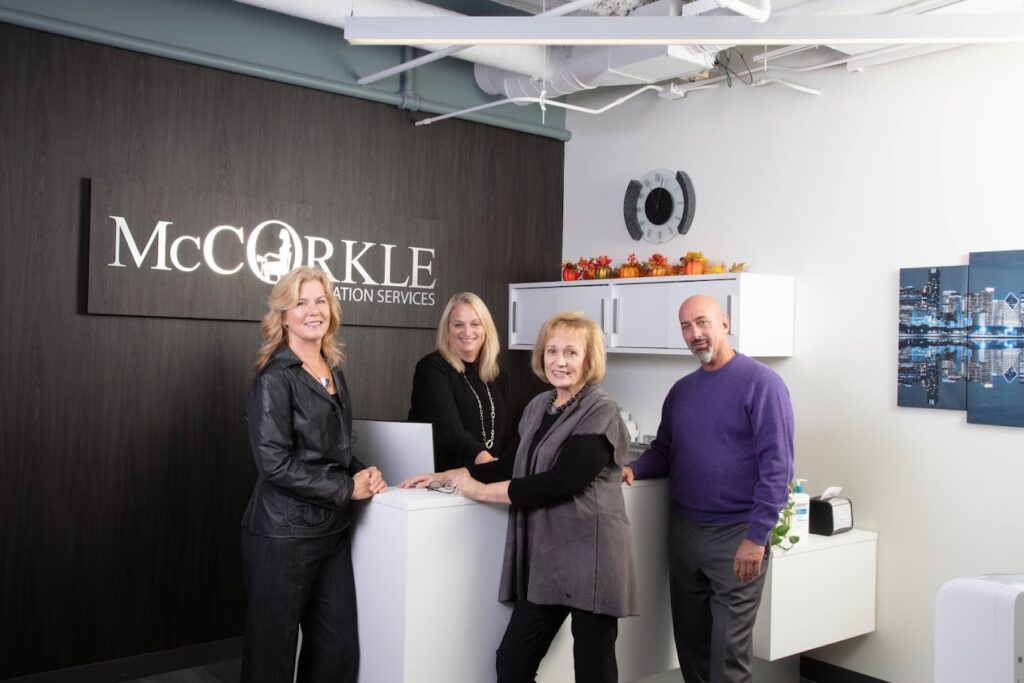Exploring the Field of Broadcast Captioning
In the realm of communication, ensuring that information is accessible to all is of paramount importance. One of the most essential means of achieving this is through broadcast captioning. As an integral part of the media landscape, broadcast captioning plays a vital role in making audio-visual content accessible to individuals who are deaf or hard of hearing, as well as to non-native speakers and those in multilingual settings. This article delves into the field of broadcast captioning, exploring its history, technology, challenges, and prospects for the future.
The evolution of broadcast captioning has progressed from rudimentary methods that accompanied silent films to advanced technology used in real-time broadcasting. Initially, captioning was thought of as an accommodation for those with hearing impairments, but it has gradually transitioned into a crucial aspect of professional communication, enhancing the audience’s understanding of content across various media platforms. The development of accurate, synchronized, and timely captioning has truly revolutionized how we consume media.
The Importance of Broadcast Captioning
Broadcast captioning serves several critical functions in society. Its importance can be categorized into a few key areas:
- Accessibility: It ensures that individuals with auditory impairments can access and understand audio-visual content.
- Comprehension: Captions aid in comprehension for non-native speakers who may struggle with rapid speech or unfamiliar accents.
- Content Engagement: Captions can enhance viewer engagement, keeping audiences focused on content without being distracted by sound quality.
- Educational Value: Captions help in language learning and provide context in educational videos, enhancing learning experiences.
As society moves toward inclusivity, broadcast captioning stands as a vital bridge. It fosters an environment where information is freely available to everyone, ensuring that no one is left behind, regardless of their hearing ability or language proficiency. This commitment to accessibility is reflected in legislative measures such as the Americans with Disabilities Act (ADA) and various international mandates that promote the inclusion of individuals with disabilities.
Types of Broadcast Captioning
Captioning can be categorized into two main types: closed captions and open captions. Understanding the differences between these types is essential for content creators and media consumers alike.
Closed Captions
Closed captions are text displayed on the screen that can be turned on or off by the viewer. They are embedded in the video but are not visible until activated by the user. This form of captioning is popular on various platforms, particularly television and streaming services.
Open Captions
Open captions, on the other hand, are always visible and cannot be turned off. This type is typically used in environments where all viewers may benefit from the text, such as in public screenings or theaters. Open captions ensure that everyone receives the same information conveyed through the audio.
- Closed captions offer more flexibility and are tailored to the preferences of the viewer.
- Open captions guarantee universality—applicable to diverse audiences regardless of their needs.
The Technology Behind Broadcast Captioning
The technology used in broadcast captioning has advanced significantly over the years. The implementation of digital tools has enhanced the accuracy and efficiency of captioning services. The major technologies involved are:
- Speech Recognition Software: This technology transcribes spoken words into text in real time. Many broadcast outlets use advanced algorithms and artificial intelligence to improve accuracy.
- Stenography Equipment: Professional captioners may use shorthand devices to transcribe speech instantly. This method relies on trained professionals who interpret dialogue quickly while maintaining a high level of accuracy.
- Captioning Software: Software solutions facilitate the creation, editing, and coordination of captions with video footage, allowing for effective synchronization.
The integration of these technologies allows for more accessible and viewer-friendly content. However, despite advancements, it is important to acknowledge the intrinsic value of human oversight. Automated systems may struggle with audio quality, accents, or multiple speakers, which can lead to inaccuracies that detract from the viewer’s experience.
Challenges in Broadcast Captioning
Despite its importance, the field of broadcast captioning faces numerous challenges. Some of the key obstacles include:
- Accuracy: Achieving high accuracy in captioning, especially in real-time settings, is a struggle. Inaccuracies can result from technical glitches, background noise, and the complexity of language.
- Cost: High-quality captioning services can be expensive, which may deter some broadcasters from investing in these essential resources.
- Compliance: Many organizations struggle to meet legal requirements for captioning, leading to penalties and challenges regarding accountability.
- Varied Standards: Different platforms and countries may have varied standards for captioning, causing inconsistency in quality.
To address these challenges, broadcasters must invest in training, technology, and awareness programs. Collaboration between various stakeholders—content creators, software developers, and advocacy groups—can foster a more harmonious captioning ecosystem. By recognizing the critical need for high-quality services, the industry can work together to overcome these challenges and provide more accessible media environments.
The Future of Broadcast Captioning
Looking ahead, several trends and innovations are likely to shape the future of broadcast captioning:
- AI Advancements: The continued development of artificial intelligence and machine learning technologies will enhance real-time captioning capabilities.
- Global Accessibility Solutions: As media becomes more global, the demand for multilingual captions and subtitles will increase, providing more equitable access for an international audience.
- Augmented Reality and Virtual Reality: As AR and VR gain traction in the media landscape, there will be a need for innovative captioning solutions tailored to immersive environments.
- Increased Regulations: Governments around the world may introduce stricter regulations regarding captioning, prompting the media industry to adapt swiftly.
These advancements and shifts will require adaptability from content producers and broadcasters. Embracing innovation while retaining a focus on accessibility is critical for the future of broadcast captioning. Preparing for these changes, staying ahead of emerging trends, and understanding regulatory developments will enable the industry to thrive and serve its diverse audience effectively.
Incorporating Broadcast Captioning into Your Content
If you are a content creator or broadcaster, here are practical steps you can take to incorporate effective captioning into your work:
- Choose the Right Service: Evaluate captioning services based on experience, technology, and client reviews. Look for professionals who have proven track records of delivering high-quality captions.
- Provide Clear Audio: Ensure that the audio quality is as high as possible. This helps with the accuracy of automated transcription and human captioners alike.
- Use Clear Language: Avoid idioms, slang, or overly complex language. Simplicity can improve the accuracy of captioning and enhance understanding.
- Conduct Regular Reviews: Continually assess and revise your captioning strategy based on audience feedback and professional advice. This helps to ensure that your content remains accessible.
Implementing good practices not only benefits your audience but also enhances the overall quality and reach of your content. As a society, we must embrace the importance of accessibility, fostering an inclusive environment where information flows freely and everyone can engage with media meaningfully.
Frequently Asked Questions (FAQs)
What is the difference between captioning and subtitling?
Captioning includes not only the spoken dialogue but also speaker identification, sound effects, and other relevant audio information, which is particularly useful for individuals with hearing impairments. Subtitles typically focus only on translating spoken dialogue and may not include additional audio cues.
Are closed captions the same as subtitles?
Closed captions and subtitles are not the same. While both display the spoken text on screen, closed captions provide additional information, such as sound effects and speaker identification, which are not offered by traditional subtitles.
Do all TV programs have captions?
In many countries, regulations require broadcasters to provide captions for most programs. However, there may still be exceptions for live broadcasts, specialty programming, or specific content types. Therefore, not all television programs may have captions available.
How can I turn on captions on my device?
Most devices have caption settings under the accessibility or playback options. This can vary by platform but generally includes a simple toggle to enable or disable captions. Refer to the user manual or online support for specific instructions based on your device.
References
For additional reading on broadcast captioning and its relevant technologies, you may find the following articles helpful:
- National Association of the Deaf: What is Captioning?
- American Libraries: What Captioning Means for Accessibility in Multimedia
- NPR: Sighted People Need Captions Too
In conclusion, broadcast captioning is a critical element in today’s multimedia landscape, ensuring that audiences of all backgrounds can access and enjoy a wide range of content. As technology continues to evolve, so too does the potential for broadcast captioning to enhance accessibility and inclusivity in communication. Understanding the significance, challenges, and future of this field will help empower content creators and consumers alike to champion and support the ongoing pursuit of accessible media experiences for everyone.

About McCorkle Litigation Services
McCorkle Litigation Services is a premier provider of comprehensive litigation support, specializing in delivering exceptional court reporting services to legal professionals. With decades of experience in the industry, McCorkle has built a reputation for reliability, accuracy, and professionalism. Their team of certified court reporters is adept at capturing every word of legal proceedings with precision, ensuring attorneys and clients have access to impeccable records. Whether it’s depositions, trials, arbitrations, or hearings, McCorkle’s expertise extends across a wide array of legal matters, making them a trusted partner in the litigation process.
The experienced court reporters at McCorkle Litigation Services are highly trained in the latest technologies, including real-time transcription and video deposition synchronization. This ensures that clients receive timely and efficient services tailored to meet the demands of modern legal practices. McCorkle’s commitment to accuracy and confidentiality is unwavering, offering peace of mind to legal teams who require reliable documentation of critical proceedings. Backed by a legacy of excellence and a dedication to client satisfaction, McCorkle Litigation Services continues to set the standard for court reporting and litigation support nationwide.







